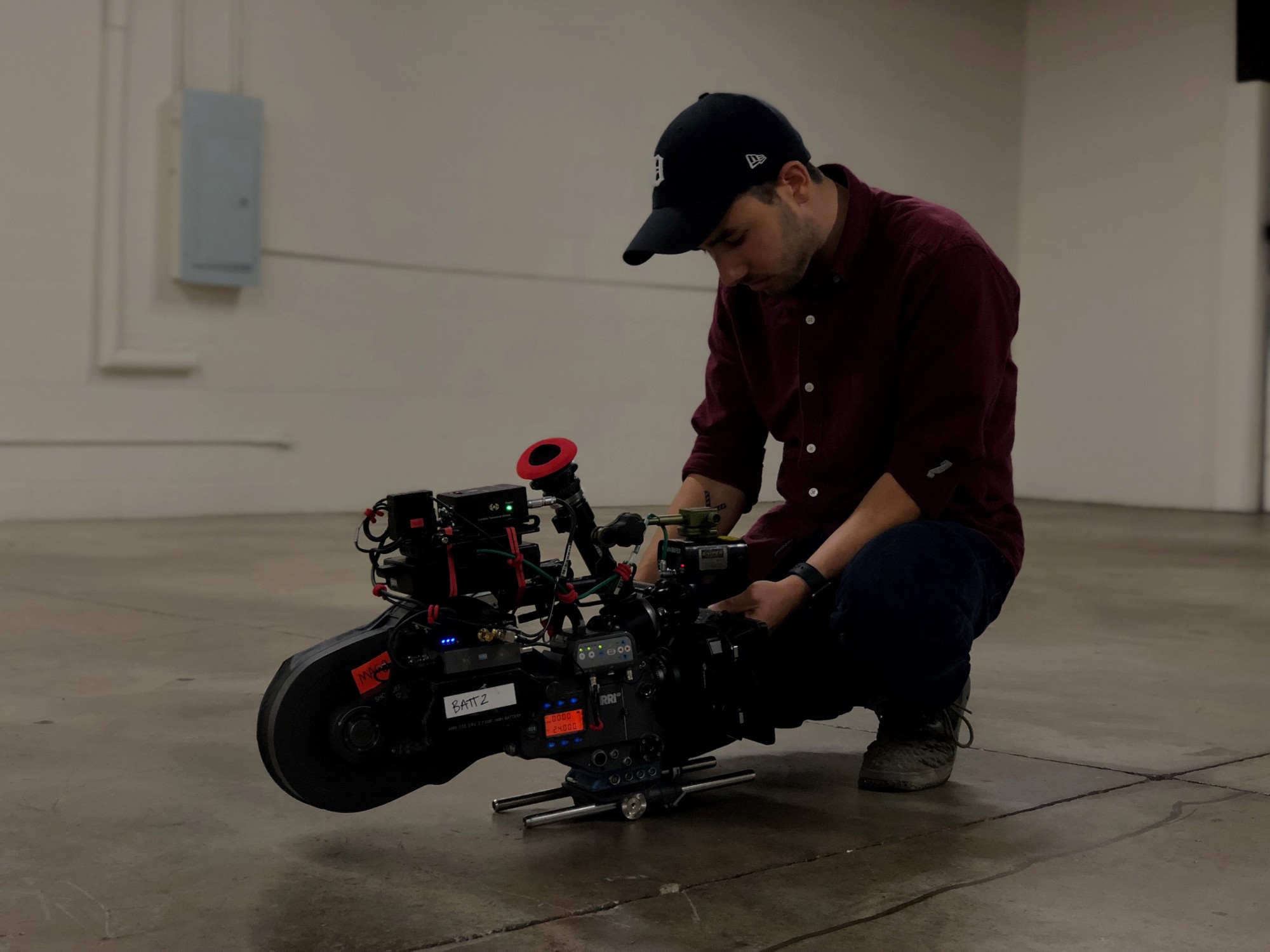
Shot on 35mm over the course of 8 hours, LA-based Director Carlos Asse’s experimental dance short Dark at Sea provides an unsettling depiction of a man’s struggle with himself as he battles to determine the true meaning in his journey as a dancer. DN caught up with Asse to discover how the challenges of a 35mm shooting system and dwindling production time mirrored the themes of this exploration of frustration, defeat and addiction to success.
The initial concept came to life after Paul Theodoroff, the cinematographer, and I were catching up over coffee and found out that we were both trying to explore a side of filmmaking that we had never approached or experimented with in the past. We wanted to create something different. A small idea sparked our interest and we developed it until we felt we had something worth creating.
Dark at Sea started as a love letter to the ambitions and the payoffs that come with being a creative, and the sacrifices that it entails. We wanted to create something personal and abstract but that the general audience, and especially our creative community, could relate to. I was hungry and passionate to create something from a vulnerable standpoint. Making this film reminded me that the persistence and self-afflicting nature of the human being is, however, what keeps us hungry for what’s left out there to conquer.
I was hungry and passionate to create something from a vulnerable standpoint.
Once this idea manifested and Paul and I continued to talk about it, we both knew we wanted to shoot it on 35mm film. This was crucial for the project since the theme and essence of the concept deals with self-exploration and how us humans tend to reject uncertainty, rather than embrace it. I was sure I wanted to make this one count, and shooting on celluloid was, in a way, making me experience the theme of my own film: detaching from a tangible and materialistic goal and forcing myself to appreciate what we were doing for what it meant to me, not what I could obtain from it in the end.


We knew from the start that shooting Dark at Sea on motion picture film was going to be a challenge. We really didn’t have many resources to get this done but everything happened organically. Paul and I met almost daily for a little over a week and produced it ourselves. We were able to borrow most of the gear from friends and our small crew came on board very organically.
When the concept was fully fleshed out and we decided to move forward and make it happen, Paul and I were a bit lost on how to find the right dancer that could express Dark at Sea’s essence and at the same time, could bring something fresh to the table. Paul reached out to some filmmaker friends that had worked with dancers in the past to ask for recommendations. We saw some dancers’ work on their websites or social media and we magically stumbled across Matthew Gibbs’ work – On a side note, it is mind-blowing to think how much of a work tool Instagram has become to us creatives.
Seeing Matthew’s moves was jaw-dropping. Matthew’s main dance styles are called bone-breaking and flexing. Paul and I instantly looked at each other and smiled as in “he’s obviously the one”. We reached out to him with a brief summary of our concept. He was interested and jumped on board. Matthew and I talked more about the underlying meaning of the piece and ways in which we could use his dance to communicate our ideas on the screen.


The experience on set was really refreshing. I knew I wanted to approach this in a more conceptual way rather than straight-forward/tangible directions. Matthew was really open to it, too. He is very talented and smart, and he knew how to approach this project from the start and showed up on set with a clear idea of what he wanted to do. Matthew started dancing and brainstorming ideas for his choreography, and together we shaped it until we had something that worked well for the concept and also for Paul and the camera. We rehearsed the dance parts only a few times since Paul and I had agreed on keeping it very organic, natural and raw.
I knew I wanted to approach this in a more conceptual way.
The concept was far more complex but due to technical issues on set, we ended up moving things around and made it work regardless. While our camera team was troubleshooting, Paul and I were becoming aware that we needed to compromise and chose what parts to prioritize to still be able to communicate our concept effectively.



We had rented the location for 8 hours and were about to hit the 6th hour without a single shot. We ran through three different 35mm systems until the last one finally worked. Our loader Chastin Noblett was unloading and loading film from one magazine to the next. Joshua Cote and Travis Francis, the 1st and 2nd ACs respectively, built the camera and set it up with only a few hours left on the clock.
We were, once again, experiencing our own film while on set. Failing over and over and finally being able to make Dark at Sea exist. We took a risk and it was so rewarding at the end.


